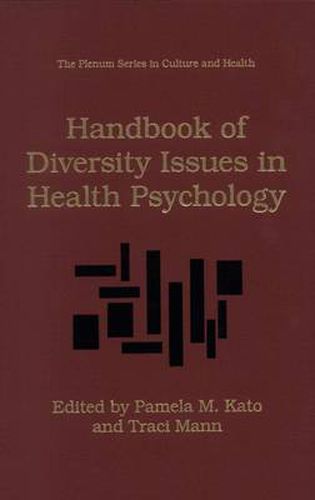Readings Newsletter
Become a Readings Member to make your shopping experience even easier.
Sign in or sign up for free!
You’re not far away from qualifying for FREE standard shipping within Australia
You’ve qualified for FREE standard shipping within Australia
The cart is loading…






This title is printed to order. This book may have been self-published. If so, we cannot guarantee the quality of the content. In the main most books will have gone through the editing process however some may not. We therefore suggest that you be aware of this before ordering this book. If in doubt check either the author or publisher’s details as we are unable to accept any returns unless they are faulty. Please contact us if you have any questions.
The field of health psychology has grown dramatically in the last decade, with exciting new developments in the study of how psychological and psychosocial processes contribute to risk for and disease sequelae for a variety of medical problems. In addition, the quality and effectiveness of many of our treatments, and health promotion and disease prevention efforts, have been significantly enhanced by the contributions of health psychologists (Taylor, 1995). Unfortunately, however, much of the theo rizing in health psychology and the empirical research that derives from it continue to reflect the mainstream bias of psychology and medicine, both of which have a primary focus on white, heterosexual, middle-class American men. This bias pervades our thinking despite the demographic heterogeneity of American society (U. S. Bureau of the Census, 1992) and the substantial body of epidemiologic evidence that indicates significant group differences in health status, burden of morbidity and mortality, life expectancy, quality of life, and the risk and protective factors that con tribute to these differences in health outcomes (National Center for Health Statistics, 1994; Myers, Kagawa-Singer, Kumanyika, Lex, & M- kides, 1995). There is also substantial evidence that many of the health promotion and disease prevention efforts that have proven effective with more affluent, educated whites, on whom they were developed, may not yield comparable results when used with populations that differ by eth nicity, social class, gender, or sexual orientation (Cochran & Mays, 1991; Castro, Coe, Gutierres, & Saenz, this volume; Chesney & Nealey, this volume).
$9.00 standard shipping within Australia
FREE standard shipping within Australia for orders over $100.00
Express & International shipping calculated at checkout
This title is printed to order. This book may have been self-published. If so, we cannot guarantee the quality of the content. In the main most books will have gone through the editing process however some may not. We therefore suggest that you be aware of this before ordering this book. If in doubt check either the author or publisher’s details as we are unable to accept any returns unless they are faulty. Please contact us if you have any questions.
The field of health psychology has grown dramatically in the last decade, with exciting new developments in the study of how psychological and psychosocial processes contribute to risk for and disease sequelae for a variety of medical problems. In addition, the quality and effectiveness of many of our treatments, and health promotion and disease prevention efforts, have been significantly enhanced by the contributions of health psychologists (Taylor, 1995). Unfortunately, however, much of the theo rizing in health psychology and the empirical research that derives from it continue to reflect the mainstream bias of psychology and medicine, both of which have a primary focus on white, heterosexual, middle-class American men. This bias pervades our thinking despite the demographic heterogeneity of American society (U. S. Bureau of the Census, 1992) and the substantial body of epidemiologic evidence that indicates significant group differences in health status, burden of morbidity and mortality, life expectancy, quality of life, and the risk and protective factors that con tribute to these differences in health outcomes (National Center for Health Statistics, 1994; Myers, Kagawa-Singer, Kumanyika, Lex, & M- kides, 1995). There is also substantial evidence that many of the health promotion and disease prevention efforts that have proven effective with more affluent, educated whites, on whom they were developed, may not yield comparable results when used with populations that differ by eth nicity, social class, gender, or sexual orientation (Cochran & Mays, 1991; Castro, Coe, Gutierres, & Saenz, this volume; Chesney & Nealey, this volume).